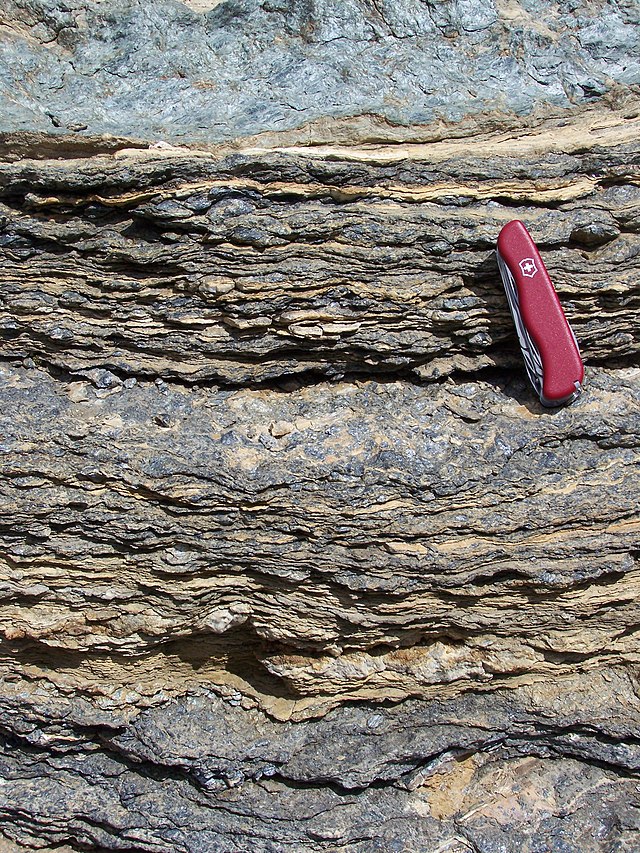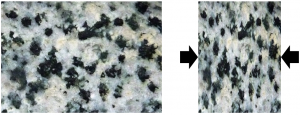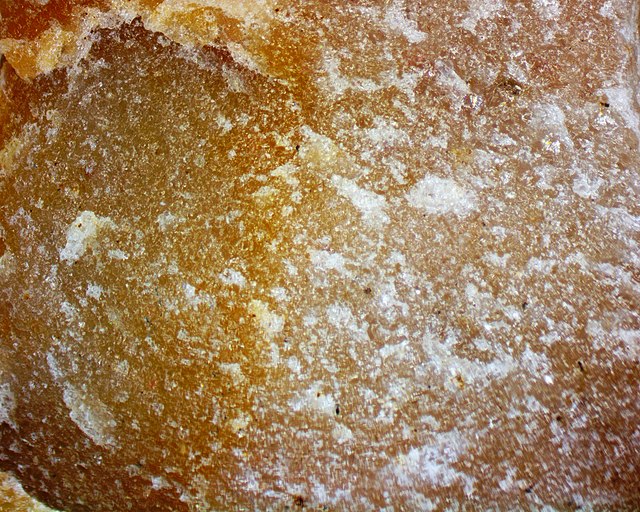6.3 Metamorphic Textures
Textures of Metamorphic Rocks
The texture of a rock, whether it is igneous or sedimentary, may change as it is exposed to metamorphic conditions. The atoms that compose the rock may be rearranged, and minerals may recrystallize into new species so that a completely new texture from the old parent rock may form. Two main types of metamorphic rock textures are the following:
Foliation/Preferred Orientation

When a rock is subjected to differential stress, the preexisting grains and minerals in that rock may either (1) be reoriented parallel to one another or (2) new minerals will grow parallel to one another. Foliation describes a rock texture in which the rock fabric is stacked in parallel planar horizons. It can consist of alternating bands of minerals or the alignment of platy minerals. [1]

Check out this short video below on how foliation can develop:
Non-Foliated/Granoblastic Texture

Metamorphic rocks with a random grain orientation lack foliation. They either experienced no differential stress during formation or their minerals could not be aligned during the application of differential stress. This type of texture is called granoblastic texture or non-foliated.
Another important consideration in classifying metamorphic texture is the grain size of the rock. In general, the more intense the metamorphic conditions are (temperature and pressure) the coarser a metamorphic rock will become. This is because metamorphic agents will cause the grains within a rock to recrystallize. [1]
Let’s Review!
Let’s look at some images of metamorphic rocks. You will classify whether each sample is foliated or non-foliated.

